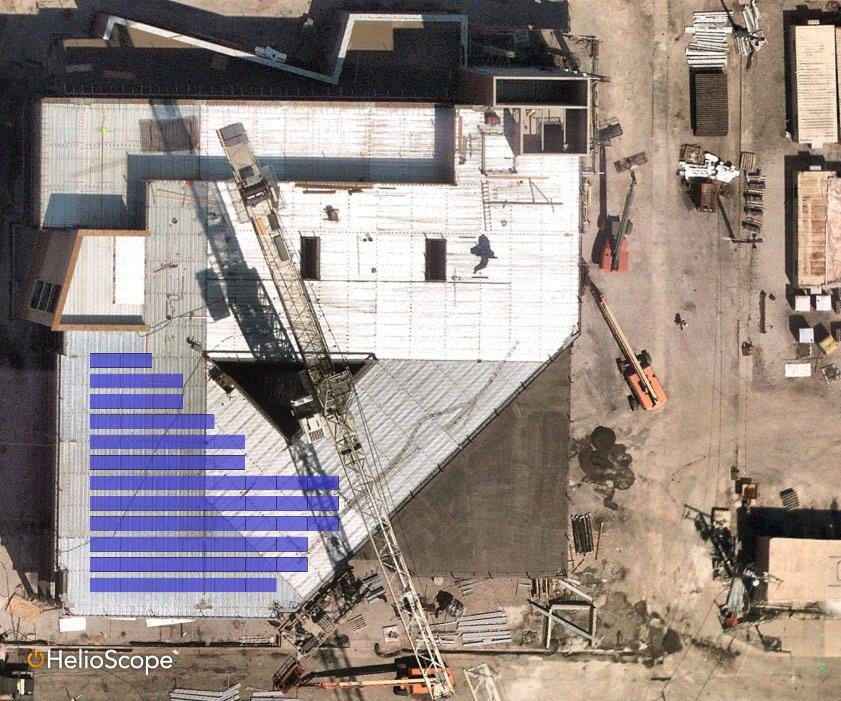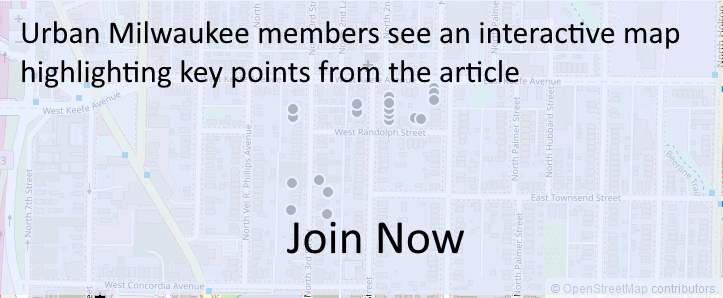County Has Huge Solar Energy Potential
Report identifies 22 possible projects. Federal infrastructure bill could help fund them.

Conceptual design for solar array on top of new Marcia P. Coggs Human Services Building. Milwaukee County.
Milwaukee County is well placed to take advantage of solar power generation, but does it have the money?
Earlier this year, the Milwaukee County Board asked the administration to look into a countywide expansion of solar power generation, as opposed to a piecemeal approach taking on one solar project at a time.
The results are in. A new report suggests there are dozens of potential solar projects across county government and that the federal Bipartisan Infrastructure Law has created an unprecedented opportunity for local governments to invest in renewable energy systems.
Mckinstry, a national engineering firm with an office in Madison, identified 22 potential solar projects at 17 sites across county government. The firm ranked projects based on energy generation, carbon emission offset and financial feasibility; a rooftop solar array at the Community Reintegration Center topped the list.
“The projects recommended through this report demonstrate that the county is uniquely positioned to be a leader in the state, and in the region, for renewable energy adoption,” said Sam Bluemer-Garibay, an account manager with McKinstry.
The comprehensive look at solar power was brought to the fore by the development of a replacement for the Marcia P. Coggs Human Services building. The county is building a $42 million human services building at 1230 W. Cherry St. and two supervisors worked to have the county consider adding solar to the project.
Chairwoman Marcelia Nicholson and Sup. Priscilla E. Coggs-Jones proposed a rooftop and solar array to meet the electricity needs of the new Coggs building. The rooftop array was number six on the McKinstry list of potential solar projects in terms of priority and the parking lot array was further down. But if both were developed the building could generate all of its electricity through solar, Bluemer-Garibay told supervisors on the county board’s Committee on Community, Environment and Economic Development.
The rooftop solar array would be significantly smaller than the parking lot array, and cost the county an estimated $165,000 compared to the parking lot array’s $2.7 million. The project would need to be broken up, as there’s enough funding for the rooftop within the budget for the new building, but not for the parking lot.
At the top of the report’s list is a $1.3 million array on top of the Community Reintegration Center, the correctional center operated by the county at 8885 S. 68th St. in Franklin.
The county only has so much money to invest in infrastructure each year, and it is currently planning one of the largest infrastructure projects in the history of the county: a new criminal courthouse. Before the county spends big on expensive solar projects, it’s recommended the board also consider “low hanging fruit” that will help the county meet its goal of carbon neutrality by 2050, said Stuart Carron, Director of Facilities Management.
Some of the low-hanging fruit includes high-efficiency lighting upgrades and upgrading existing building systems so they are more energy efficient.
The county has limited funding to finance projects like these and a massive backlog of maintenance and infrastructure needs estimated at $1 billion, with half of that in the parks system. Funding for a solar array will be in competition with all the other capital needs of county government, including new buses and park improvements.
However, the time is now for local governments to invest in solar projects, thanks to the federal Bipartisan Infrastructure Law, according to Bluemer-Garibay. The law allows non-taxpaying entities, like local governments, to receive tax credits for solar projects. These tax credits are funded through the infrastructure bill and can be sold to for-profit entities to offset the cost of a solar project. The new tax incentives created by the federal infrastructure bill could help the county pay for as much as 30% of some of the projects on the list.
Solar systems can eventually pay for themselves, though it may take awhile. The estimated payback time for the two arrays proposed for the Coggs building would take more than 20 years to pay for themselves. However, solar systems typically have warranties that guarantee performance for 25 to 30 years or more, Bluemer-Garibay said.
“So you are looking at a longer term payback, but these are longer term investments,” she said.
Legislation Link - Urban Milwaukee members see direct links to legislation mentioned in this article. Join today
Existing members must be signed in to see the interactive map. Sign in.
If you think stories like this are important, become a member of Urban Milwaukee and help support real, independent journalism. Plus you get some cool added benefits.
MKE County
-
Fellow Judge Testifies in Dugan Case
 Dec 16th, 2025 by Graham Kilmer
Dec 16th, 2025 by Graham Kilmer
-
Key Questions in Dugan Trial Take Shape on First Day
 Dec 15th, 2025 by Graham Kilmer
Dec 15th, 2025 by Graham Kilmer
-
FTA Tells Milwaukee to Crack Down on Fare Evasion — Even Where Fares Don’t Exist
 Dec 12th, 2025 by Graham Kilmer
Dec 12th, 2025 by Graham Kilmer





















